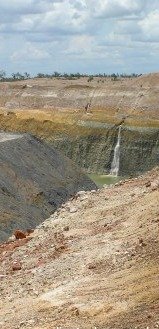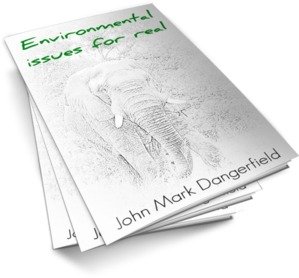Home | About CCW | Contact Us | Climate change Meaning | Causes | Solutions | Emissions | Carbon trading
Coal combustion emissions
Coal combustion emissions used to be a serious pollution problem.
Sulphur dioxide, nitrous oxides and particulates were released from coal-fired power stations and domestic heating caused problems from acid rain to respiratory disease.
Regulation has forced the development and installation of technologies, such as flue gas scrubbers, that have largely removed these gases as pollutants.
Coal is actually a sedimentary rock made up mostly of carbon.
It forms when plant matter is protected from decomposition and oxidation, mostly when it is covered with mud or water, and then compressed by being buried under other sediments.
Each year we mine and burn roughly 1,000 million metric tons of coal because it is a great fuel — burning cal releases the energy that ancient plants captured from the sun millions of years ago, and we find it relatively easy to dig it up and burn it.
Coal combustion emissions and climate change
So whilst we did a reasonable job of cleaning up the sulfur, nitrous oxide and particulates we now recognise a new pollution problem — carbon dioxide.
CO2 is a greenhouse gas. Once in the atmosphere molecules of CO2 have the ability to absorb radiant energy bouncing off the earth's surface preventing some of that energy escaping back into space.
As CO2 concentrations increase the greenhouse effect is enhanced and the extra energy held back in the atmosphere gives us global warming .
12,600 million tCO2 per year is enough to raise the concentration of CO2 in the atmosphere.
Detailed direct measurements of this concentration in the atmosphere began in 1958 at 316 ppm CO2 and have risen steadily since, reaching 392 ppm as at July 2011.
Burning of coal is a big chunk of what is behind anthropogenic climate change .
Solutions to this new pollution problem are elusive. Regulations have been slow o emerge partly because the technology to capture the CO2 from burning coal, known as carbon capture and storage , is expensive and not yet available at commercial scales.
There is also a NIMBY problem with CCS - not in my backyard.
Without a technology fix, regulation would mean we would have to burn less coal. Energy demand would then have to be met from alternative fuels such as wind, solar, hydro, geothermal, tidal and wave.
Not a bad idea but a huge shift given that alternatives currently deliver less than 10% of total global energy demand.
Plus, for the time being, coal is cheap fuel.
And cheap fuel means cheap electricity and electricity is the foundation of our economics. It's a brave politician who would go out on a limb to argue for more expensive energy, especially as she must speak out as those with vested interests are twisting her arm.
More reading from CCW
Environmental Issues for Real by Dr J. Mark Dangerfield looks at some of the obvious, and some of the not so obvious, challenges for a growing human population living as we do in a finite world.
Only this time it's not about the impending disasters or the guilt or the blame.
This time, it’s 10 brief essays that are about the bigger picture. In less than an hour you could glimpse something different, a view that we can only see when we take a fresh look.
Download your copy at Smashwords
Back to top of Coal combustion emissions | Return from Coal combustion emissions to Carbon emissions | Back to Climate change wisdom home page
Recent Articles
-
Reducing emissions while looking for solutions...
Nov 01, 15 04:46 PM
I've seen a lot of post's online for ideas on reducing emissions. The one suggestion I have not seen, is the most obvious. There should be a government -
Climate change evidence
Mar 24, 15 06:22 AM
Real climate change evidence has to demonstrate a change in climate. An extra sunny day or a severe storm or a flood is not enough. -
The climate change effect
Feb 19, 15 03:08 AM
What will be the climate change effect? There isn't one, there are many. Perhaps too many for us to understand.



New! Comments
Have your say about what you just read! Leave me a comment in the box below.